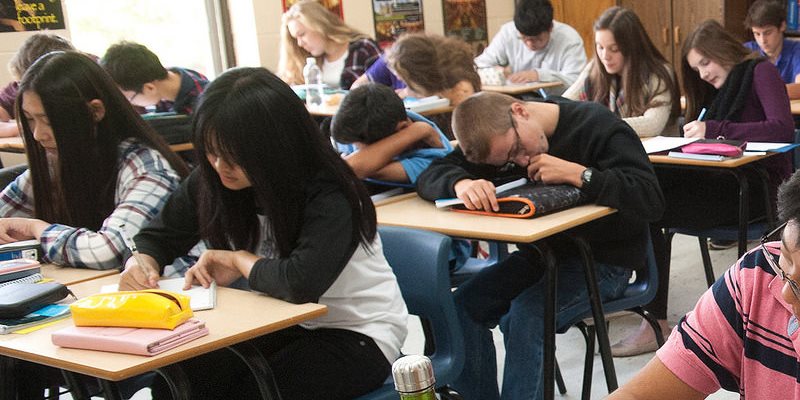Ontario spends more on education while student test scores decline

Policymakers in Ontario too often take the mistaken view that more spending on education means better results. In reality, we already spend at relatively high levels—without the commensurate boost in student performance. Simply put, we should worry less about how much money we spend, and more about how we spend it.
In terms of K-12 education, Ontario has the highest level of total spending in the country. And spending has been growing. A recent study found that between 2012/13 and 2016/17 (the latest year of comparable data), spending on public schools in Ontario increased from $25.5 billion to $27.9 billion—an increase of 9.2 per cent.
Subsequently, Ontario per-student spending (adjusted for inflation and enrolment changes) reached $13,894 in 2016-17, eclipsing national spending levels by $579 per-student. But despite both the high level of spending and its growth, the province has not seen improved student performance on standardized tests.
For example, over the last decade Ontario’s PISA scores, the gold standard of international testing, show a decline in reading, science and mathematics.
In addition, the province’s own standardized testing reveals worrying declines. For example, between 2012-13 and 2017-18, the share of Grade 4 students at or above the acceptable standard in mathematics has decreased from 77 per cent to 65.7 per cent, and the share of Grade 7 students at or above the acceptable standard has decreased from 73.3 per cent to 65.3 per cent.
So while education spending in Ontario rises, student test scores are dropping. Thankfully, Ontario can learn some important lessons from other provinces such as British Columbia, which spends 14.5 per cent less than Ontario per student—$13,894 versus $11,879 (2016-17). In fact, B.C. is the second-lowest spending province after Quebec.
And yet, according to PISA test results, B.C. students achieve comparable results to students in Ontario.
Of course, many factors contribute to student performance. But it’s important to understand the differences in how the two provinces deliver and finance K-12 education. B.C. provides a fairly basic public-school system with almost all of the diversity and choice provided by independent schools including religious-based education, alternative educational approaches and content-focused programs such as STEM. In contrast, Ontario has up to four competing public-school systems including Catholic education in both English and French.
Put differently, Ontario relies much more heavily on the public-school system to deliver choice to parents and students while B.C. relies on independent schools to achieve comparable results at substantially lower cost.
Ontario policymakers, who often simply respond to problems by spending more money, would do well to look west to B.C for ways to reform both education spending and delivery. Clearly, it’s more important to worry about how education is delivered than about how much we spend. The evidence suggests Ontario could spend less through education reform.
Authors:
Subscribe to the Fraser Institute
Get the latest news from the Fraser Institute on the latest research studies, news and events.


